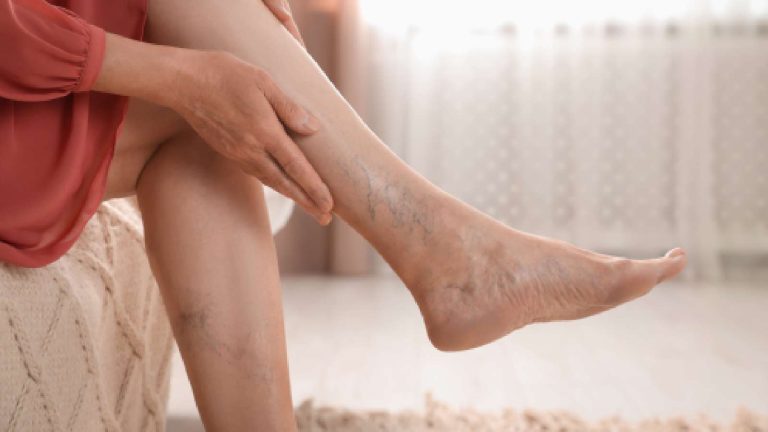
Anybody diagnosed with varicose veins knows how painful it can be. It can lead to immense leg pain, interfering with your day-to-day life. Hence, it is the need of the hour to manage leg pain and improve the quality of life. Varicose veins is a common condition that impacts millions of people across the country. Not only do they look unsightly, but they can also cause significant leg pain and discomfort. If you have been experiencing varicose veins pain, you should seek help immediately to avoid complications.
What is varicose veins?
Varicose veins are not just a cosmetic concern, they can also cause significant leg pain. The twisted and enlarged veins hinder blood circulation, leading to discomfort and throbbing sensations in the legs. This pain is often exacerbated by prolonged standing or sitting, as these positions increase pressure on the affected veins. In addition to the direct impact on blood flow, varicose veins can also contribute to the development of other painful conditions, such as venous ulcers and skin discoloration. These complications arise due to chronic venous insufficiency – a condition where damaged valves in the veins fail to prevent blood from flowing backward properly. As blood pools in the lower extremities, it causes inflammation and tissue damage, resulting in persistent leg pain that may require comprehensive medical intervention for relief.

How to prevent leg pain due to varicose veins?
If you’re struggling with varicose veins and want to prevent your leg pain from worsening, there are several steps you can take:
1. Regular exercise
Regular exercise is crucial in improving blood circulation and reducing the pressure on the veins. Engaging in activities such as walking, swimming, or cycling can strengthen the muscles in your legs and promote efficient blood flow.
Also Read: 6 exercises to deal with varicose veins
2. Keep your weight in check
Additionally, maintaining a healthy weight can significantly reduce the strain on your legs’ veins. It is natural that the more pressure the veins are under, the more symptoms you will experience. Hence, it is important that lose a few extra kilos to reduce the pressure on your veins, which might help reduce the pain.
3. Elevate your legs
Elevating your legs while resting or sleeping can help alleviate leg pain caused by varicose veins. Elevating your legs above heart level allows gravity to assist with blood flow back toward the heart and reduces swelling and inflammation.
Select Topics of your interest and let us customize your feed.
PERSONALISE NOW
4. Compression stockings may help
Wearing compression stockings is a highly effective way to prevent leg pain from worsening. These specially designed stockings apply gentle pressure to your lower extremities, helping support vein function and reducing discomfort.

5. Consult your doctor
To effectively address varicose vein-related leg pain, an individual treatment plan targeting both symptomatic relief and underlying venous issues is crucial. Given that each person’s experience with varicose veins is unique, seeking advice from specialists will ensure tailored solutions that provide long-term relief from this debilitating condition.
The last word
By following these tips and incorporating them into your daily routine, you’ll be able to take control of your varicose veins and prevent further deteriorating leg pain. Remember to consult with a medical professional for personalised advice tailored to your specific needs before implementing any changes into your routine.